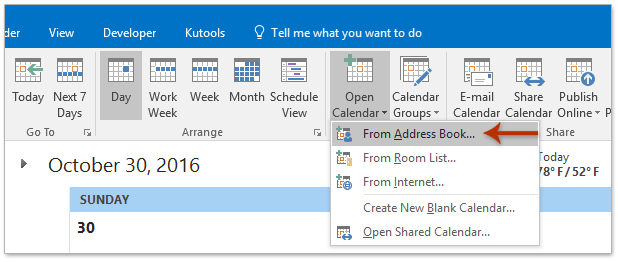
- OUTLOOK FOR MAC ADDING CALENDAR FROM DIRECTORUY INSTALL
- OUTLOOK FOR MAC ADDING CALENDAR FROM DIRECTORUY PASSWORD
When you've successfully logged in to your Microsoft account, you will see a success page to verify that the connection is enabled between Outlook and Pipeline. Sign in to your Microsoft account when prompted. You’ll then be able to sign into your Pipeline account from the slide-in that appears.

The Pipeline icon will be visible after the message loads. users can access the Pipeline slide-in by first selecting an email in their inbox. If the sync works, you will see a success page to verify the connection is enabled between Outlook and Pipeline. You will be asked to approve sharing permissions between Pipeline and Outlook to complete the connection.
OUTLOOK FOR MAC ADDING CALENDAR FROM DIRECTORUY PASSWORD
To sign in, enter the Pipeline account username and password that you wish to sync with.Īfter successfully signing into your Pipeline account, you’ll need to sign-in with your Microsoft account and confirm that you wish to share information with your Pipeline account. Clicking on the ribbon will open the Pipeline for Outlook slide-in. Once you have installed the add-in, you’ll need to sign in to your Pipeline account.įor desktop versions of the add-in (Outlook 2013, 2016 and Mac), you’ll see a Sync to Pipeline icon in the ribbon menu.

Logging into your Pipeline account from the add-in Click on the toggle to add the add-in to your Outlook for Mac email client.
OUTLOOK FOR MAC ADDING CALENDAR FROM DIRECTORUY INSTALL
Once you find it, turn on the add-in to install it. You’ll be redirected to a modal where you can search for the Pipeline Outlook add-in.Click on the gear icon near the upper right corner of the browser window.Login to your account from a web browser.Click on the + icon and select Add from the Office Store.Enter in your credentials for your account and your browser will redirect you to your account’s Manage add-ins page.You will need to sign-in to an account to use the add-in This tab will prompt you to sign-in to your account. Click on the Manage Add-ins icon to open up a new browser tab.Open the File menu and scroll down to the page to find the Manage Add-ins option.This will start the add-in installation process. Search for Pipeline for Outlook and select Get it now for the result that appears.You will need to sign-in to an account to use the add-in. If you've checked with your email administrator and you don't think one of these three issues applies to you, contact and we can work with you to troubleshoot.Īdd-in installation for different versions of Outlook Outlook 2013 If you're not sure what you're using, check with your email administrator, they'll be able to help you out! Your email must be hosted on a Microsoft Exchange server in order to enable the Outlook integration with Pipeline.

Using Outlook email client, but not Microsoft Exchange: Outlook is an email client, not an email provider. Check with your email administrator for more details.ģ. Also, some Exchange server setups prohibit add-ins. Outlook/Exchange server prohibits add-ins: If you're using Outlook 2010 exchange server, you will be unable to use the add-in.

This is a fairly common situation and your email administrator can provide you with access to add-ins for the Pipeline Add-In.Ģ. Admin has restricted add-in access: Check with your email administrator to see if they have restricted users' settings to prohibit loading an add-in. If you don't see the options described below, here are some things to check:ġ. The Outlook Add-in is built for Outlook 2013, Outlook 2016,, and Office 365 with an email that is hosted on a Microsoft Exchange server. What if I don't see the options to Manage Add-ins or the Microsoft Store?


 0 kommentar(er)
0 kommentar(er)
